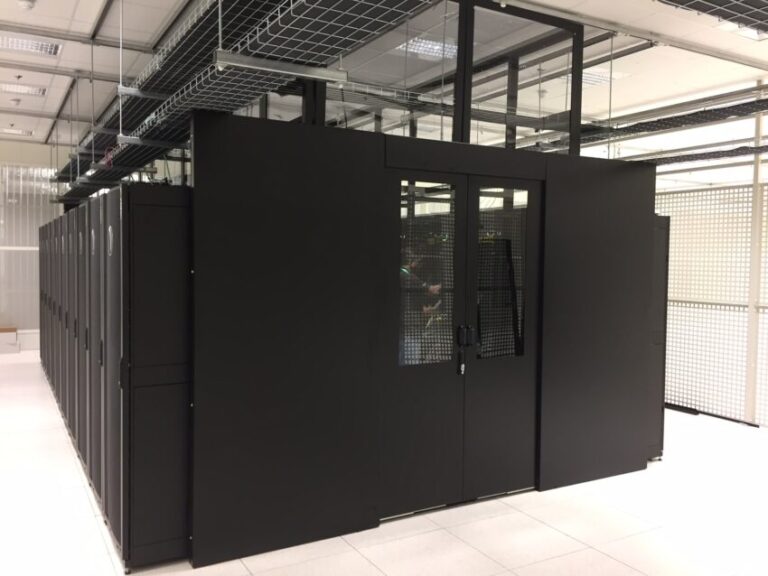[ad_1]
Despite the business world still being in the early stages of hybrid working, it can no-longer be deemed as new.
Organisations of all sizes continue to look for the optimum operational set up that benefits the business and staff alike. In particular, small and medium enterprises that often don’t have the extensive resources of large organisations, are still getting to grips with how to make hybrid working efficient, safe, productive and resilient.
According to the Small Business Confidence Index, a survey of 1,003 SME decision makers by Atomik on behalf of Newable, over the long term the jury is split with 43 per cent of SMEs expecting their employees to return to office full time and 41 per cent expecting hybrid working to remain in place. Regardless of the predicted outcome, SMEs are looking strategically at how best to operate, which includes investigating what role offices should play, if any, in innovative ways, begging the question; to relocate or not to relocate?
For some SMEs this could mean a wholesale shift to remote working, giving up expensive, unnecessary office space and making huge savings in real estate rental fees. Others are turning to a hybrid environment, where offices are kept, but slimmed down and reorganised or redesigned, and on-premise work is seamlessly combined with the ability to work from home. The defining factor is change – a change in the strategic use of office real estate driven by cost, necessity and productivity.
What is clear, is that there is no one-size-fits-all solution. The answer, different for every SME, will be based on which roles are needed to be office-based, how much collaboration is necessary and where offices are located today. However, there is one essential consideration that does apply to all, and that’s how to deal with the technology challenge of any enduring change to the workplace.
Almost all small, medium and large organisations have a data centre of some sort. It could be anything from a few servers in a small room, to an entire floor of an office building, or a warehouse full of servers – all taking up valuable office space. Rather than maintaining and managing the IT infrastructure onsite, a more efficient way to maintain the “data centre” – whatever the size – is to house it in a third-party colocation data centre facility.
Why colocation?
Colocation, the practice of housing privately-owned servers and networking equipment in a third-party data centre, isn’t just reserved for large national and multi-national enterprises. Instead of the in-house scenario where servers live within a room or a section of an organisation’s own business infrastructure, there is the option to “colocate” equipment by renting space in a colocation data centre (or third-party data centre). However, a key point to note is that the control of the infrastructure remains completely in the hands of the business.
This not only frees up office space to be used more effectively or even reduced, it also brings additional benefits such as cost savings, increased sustainability and flexibility, access to high levels of bandwidth and greater reliability. Colocation services include networking, physical security, power and cooling components, not to mention the invaluable years of expertise a provider has in managing business critical infrastructure – meaning that the smooth running of a company’s IT is safeguarded for the long-term, whatever their needs.
It is clear that the plus points of colocation are significant, freeing up limited resources so SMEs can capitalise on the knowledge of specialist providers and enjoy best of breed performance and efficiencies that they may not be able to afford as a single entity. Fast, easy connectivity to the cloud services is almost certainly a part of any remote working strategy, so the robust, reliable data centre interconnect infrastructure of colocation will enable SMEs to set up and access the remote and hybrid working world far more quickly than using in-house IT.
Flexibility can also make the critical difference for SMEs. Colocation allows companies to expand or reduce their infrastructure to fit the needs of their business without having to take on capital expenditures. Indeed, colocation data centres offer IT teams a measure of agility they otherwise may not have – crucial in any environment where it’s not just growth that companies need to be prepared for, but operations getting smaller, too.
Colocation and sustainability
The Small Business Confidence Index also found that 90 per cent of SMEs cite having a sustainable office environment as being important, up from 83 per cent in June last year. Moving IT infrastructure into a colocation facility can help SMEs to reduce their carbon footprint.
Large efficient data centre providers are the most effective way of providing for modern computing’s massive demands. In fact, data centres are already far more sustainable in comparison to previous models of computing; one of the most efficient ways to deliver a unit of computing (energy per compute unit) is to put it in a large, modern, advanced data centre on a cloud platform.
Despite being notoriously energy hungry, when it comes to integrating sustainability into their colocation facilities, data centre providers are working hard to be as efficient as possible. Developments in power and cooling have enabled greater data centre performance, and today’s providers are at the forefront of deploying some of the most sustainable buildings. Some are already committed to using 100 per cent carbon-zero energy – powering the sites solely via wind, solar and tidal energy sources.
The data centre industry is both duty-bound and regulated (the EU Commission set a “green deadline”, noting that the industry “should become climate neutral by 2030”) to lead innovations in how to make all facilities the most energy efficient they can be, which can only have a positive impact on helping office environments to be more sustainable.
This mix of working from home and office work is likely to be here for the foreseeable future, and it will place increasing demands on the infrastructure of today and tomorrow. Such a radical shift in ways of working is an opportunity to re-evaluate the IT infrastructure and the cost of moving IT equipment shouldn’t be a blocker to finding the best solution for a business.
To build an optimised IT infrastructure, and to help quickly reimagine the world of work, now is the time for SMEs to consider decoupling technology from the office working environment and migrating the complex business of managing the in-house servers to a specialist colocation provider – posing the question: to relocate or not to relocate?
Please click here for more information about VIRTUS Data Centres.
By Darren Watkins, managing director for VIRTUS Data Centres
[ad_2]
Source link























I always was interested in this subject and stock still am, thanks for posting.